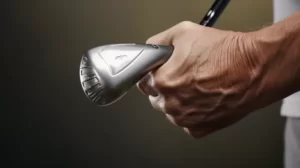If you’re suffering from tennis elbow, you’re likely all too familiar with the excruciating pain and discomfort that can accompany even the simplest of everyday tasks, like shaking hands or holding a fork. While many individuals opt for cortisone injections or anti-inflammatory drugs to treat their pain, recent research out of Sweden suggests that physical training and ergonomic treatment may actually be more effective for long-term healing, with fewer side effects than these traditional medical treatments.
The Studies at Sahlgrenska Academy
The research, conducted at the Sahlgrenska Academy, consisted of two separate studies evaluating the impact of physical training and ergonomic treatment on patients with tennis elbow. The first study included 78 patients and spanned a period of four months, while the second study involved 297 patients (an expanded sample size reinforcing the results of the initial study). Both groups followed a structured training program designed to strengthen their elbow muscles.
A key aspect of the treatment plan involved the use of a simple night bandage, which prevented the elbow from bending during sleep, thus further aiding in the healing process and providing relief from discomfort.
Physical Training & Ergonomic Treatment: Better Long-Term Results & Fewer Side Effects
Pia Nilsson, a physiotherapist and scientist at the Sahlgrenska Academy, asserts that the combination of physical training and ergonomic treatment typically results in better long-term outcomes for tennis elbow sufferers, particularly compared to cortisone injections and anti-inflammatory drugs that are intended to provide only short-term relief.
According to Nilsson, “A treatment program designed by a physiotherapist and occupational therapist together reduces the patients’ pain, increases the function of the elbow and hand, and reduces the duration of sick leave from work.”
By focusing on building up strength in the affected elbow muscles through specialized exercises and training routines, patients are better equipped to heal and prevent the injury from recurring.
Ergonomic Treatment: What You Need to Know
Ergonomic treatment consists of modifying your daily activities and surroundings to reduce the strain on your elbow and promote healing. This treatment method will likely involve the assistance of an occupational therapist who can help identify and address any factors contributing to tennis elbow.
For example, an ergonomic review of your workplace may reveal that your wrist position while typing or using a computer mouse is contributing to your condition. An occupational therapist can help you adjust your workstation setup, along with providing helpful tips for maintaining the correct wrist and arm posture throughout the day. Similarly, an assessment of your daily activities (such as sports, hobbies, or chores) can lead to recommendations for reducing strain on your elbow and avoiding risks for reinjury.
Physical Training: Exercises for Tennis Elbow
Physical training, specifically exercises targeting the forearm and elbow muscles, is an integral component of the treatment strategy detailed in the Sahlgrenska Academy studies. By working with a physiotherapist, you can develop a tailored exercise program that addresses your specific needs and helps build strength in the affected area.
Some common exercises that may be beneficial for tennis elbow include:
- Eccentric Wrist Flexion/Extension: Holding a lightweight dumbbell, slowly flex and extend your wrist with your forearm supported on a table or armrest. Repeat for several sets, gradually increasing weight and repetitions as strength improves.
- Forearm Pronation/Supination: Grasp a small weight (hammer or dumbbell) in your hand, and slowly rotate your forearm from a palm-up to a palm-down position. Perform several sets, gently increasing the intensity of the exercise as you progress.
- Ball Squeezes: Hold a small soft ball or stress-relief ball in your hand, and squeeze it firmly, then release. Repeat this process for several sets, focusing on slow, controlled movements.
- Static Hand Grips: Compress your fingers into a fist and hold for 10-15 seconds, then release. Perform several repetitions, ensuring you maintain proper form throughout the activity.
Conclusion
While cortisone injections and anti-inflammatory medications can offer temporary alleviation of tennis elbow symptoms, they are not a long-term solution for addressing the root cause of the problem.
The comprehensive treatment approach combining physical training and ergonomic treatment, as described in the Sahlgrenska Academy studies, presents a promising alternative for individuals struggling with this painful and debilitating condition. With a focus on strengthening the forearm muscles and making necessary modifications to daily activities, you can work toward addressing the issue at its source and reducing your risk of future reinjury.



